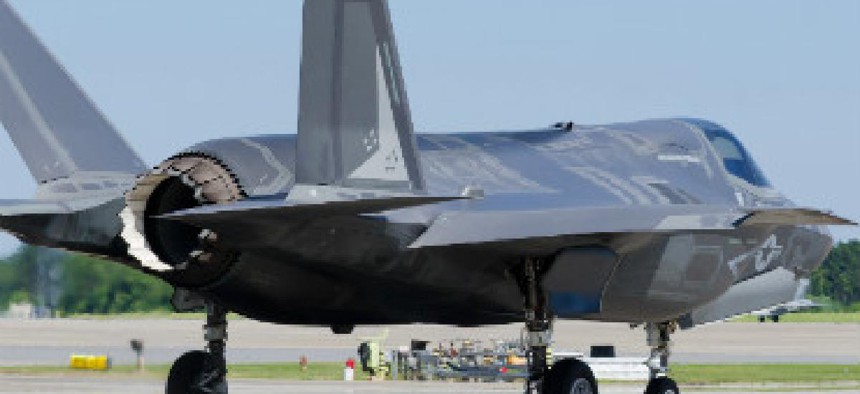F-35 software fixes on the way, program officer tells Congress

A senior defense official told lawmakers that a fix for a software glitch with the F-35 Joint Strike Fighter jet will be tested next week, but delays arising from problems are inevitable.

A senior defense official told lawmakers that a fix for a software glitch in the F-35 Joint Strike Fighter jet will be tested next week in hopes of solving the issue in the next month. But it will delay the final flight test by an additional four months.
"Currently, our most significant technical concern is the development and integration of mission systems software," said Lt. Gen. Christopher Bogdan, program executive officer of the F-35 Lightning II Joint Program Office at the Defense Department, in testimony before the House Armed Services Committee's Tactical Air and Land Forces Subcommittee on March 23.
At issue is the stability of a block of software that leads to timing problems between the radar and main computer, which causes the radar to shut off and reboot about every four hours of flight time. Officials hope that a fix will reduce incidents to once every eight to 10 hours, which Bogdan said is "good enough."
"With 8 million lines of code in the airplane, it is not unusual for both legacy airplanes and modern fifth-generation airplanes every now and then to have to reset one of the sensors in flight or have an automatic reset," he added. "That is not an uncommon situation."
He said the root cause of the stability problems has been identified, and fixes have been tested in the lab. If flight tests are successful, the patches will be added to a new version of a block of the F-35's software.
The glitch is in the 3i block, which includes a new helmet and display system. The final block, called 3F, is required for full warfighting capability. Bogdan said that phase has the most software risk because it has some of the same stability issues as the 3i block and because it must fuse information from a number of sources, such as satellites and ground stations.
The program office anticipates completing all 3i software testing this spring. Full 3F capability be fielded by late fall of 2017, Bogdan said.
The F-35 fleet will cost about $1 trillion to operate and support over its lifetime, according to a DOD estimate. A Government Accountability Office report released for the hearing states that the program faces "significant affordability challenges." GAO auditors also concluded that "delays could be exacerbated by the current mission system software stability issues and large number of remaining weapon delivery accuracy events that must take place."





